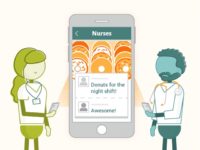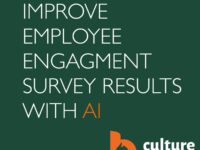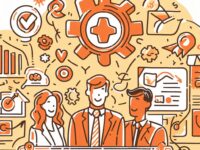Mark Lindgren is executive vice president of corporate communications and chief human resources officer for Ameren. In his current role, he serves on the Executive Leadership Team and is responsible for Ameren’s workforce strategy, human resources, and corporate communications. Here, he discusses Ameren’s evolution of Learning and Development programs to meet the demands of a modern workforce.
Tell us about your L+D tech stack
Our core LMS is Success Factors which we supplement with a custom industry-wide solution for our Nuclear Plant, LinkedIn learning for self-guided courses/learning, and Workday which we use to look at talent profiles, skills, and mentors.
You’ve been with Ameren for 25 years! What’s changed the most from a Talent Development perspective during that time?
25 years ago, L+D was really viewed as training – in-person and in a classroom. Starting about 12 years ago, we began to see computer-based training along with an expanded definition of what L+D is to include mentoring and a 70/20/10 model of learning – 70 on the job, 20 through others, and 10 informal.
- It’s expected that everyone has development plans and that you’re pursuing learning beyond what the company is giving you – a continuous learning attitude. This is enabled by the availability of self-guided learning options from YouTube to courses we offer on-demand to our team members.
- In learning from others, we’ve seen some shifts from mentoring to sponsorship and better codifying and systematizing this as part of your development and for those you lead and creating the space for mentorship to last longer (e.g. a sponsorship).
- In learning on the job, it’s not just giving someone a stretch assignment but guiding them towards resources, actions they can take, and setting expectations. We’re now trying to leverage many more different ways a person can learn on the job than before.
All together, I’d say the biggest change in the last 25 years has been how learning has become a culture bedrock and expectation and how much more it’s embedded in work overall.
Tell us about your core development programs
For our union field team members we have a lot of compliance, skills, aptitude, and qualifications training. Like operators in our plants or gas operators in the field or technical folks on the lines… a good half of the workforce is tied to what would be development for their job, qualifications for their job, and maintaining capabilities for specific career paths. On top of that there could be corporate level training on safety, DEI, broad culture training, and know the business type curriculum.
For non-union professionals there is competency-based training. For example, if they are in the appraisal or development plan and they want to enhance their communications skills, we may have resources we can provide through LinkedIn courses or classroom type learning. We’ve also got several levels of leadership development programs – emerging leaders (not leading today but could) to first line, second line, executive, and succession-led development programs. All of this ladders up to the development plan itself which includes 3 core components: (1) function-specific training, (2) mentoring, and (3) corporate programs like Safety, DEI, business acumen, analytics, change management, project management, etc. On top of all of this we have a solid tuition reimbursement program at Ameren to promote and support outside learning.
What’s something new you or your team is focused on in 2023?
Our team is leading an enterprise-wide L+D initiative looking at how we can take our total L+D across the business to the next level. We have a lot of different learning groups across specialty areas – everything from nuclear and gas to soft skills in leadership. How can we collectively enhance the output to focus on efficiency and effectiveness? This includes standardizing programs (vs. multiple versions) and challenging ourselves to directly link learning to output – can you take that back to the job? Are you more effective as a leader? Are you communicating better? Are we maximizing efficiency and collaboration across the community of professionals? Are we weeding out inefficiencies?
We’re also looking at the future of learning at Ameren. How are we thinking about AI? How are we thinking about virtual learning differently? We do some virtual reality and simulation programs in our operations groups. How can we extend that to other jobs so that we can better enable team members to practice something before they do it for real. Simulators help you understand what the work really is, what success/good looks like, and which areas outside of the simulator you need to brush up on. This also sets us up for a skill-based workforce. I might be in XYZ role but could have other skills that would otherwise be unknown. How do we start to think about talent and maximize utilization of skills.
What’s different about being a leader in 2023? What new skills do they need?
Table stakes skills are the same – collaborate, communicate, set expectations but come at it from high integrity, etc. These things haven’t changed much. What has changed is that leaders need to be more of a system and strategic thinker as well as technology and data savvy. Everything is integrated. All of our businesses are going through digital transformations, and everyone is going to need more analytics and digital acumen to maximize outcomes. Bonfyre’s Culture Coach can provide leader action at scale.
In an integrated world, a leader not only has to be a subject matter expert in their area, but also understand how their work impacts and connects to others.
What do you see as the most important components for effective training for Ameren’s frontline team members? How does this vary based on their role?
It’s all about the right person, right development, and right time. This is moving away from saying everyone with Title ABC needs Training XYZ (check the box) to a learner led approach. For example, let’s say I want to increase the capability of a team to assess safety… they could do a day of training or what’s the best way EACH of those workers could apply those skills to their job? And how will we know if they applied what they learned? With a full day, maybe they don’t like it and barely pay attention. Instead, perhaps we break it into 4 segments the team completes over 6 weeks with an assessment after each component including how what they learned is applied on the job. And as they do that, we bring them back and repeat to the next level and on.
Technology unlocks a lot for us. Our field team members will now have tablets everywhere and so we can look at ways to build learning into their daily routine. For example, before you step into the job, watch this 10-minute video on safety, how to do this, etc. We can take this even further in the future by layering on geo spatial to pinpoint every piece of equipment they have and deliver learning snackable content that’s directly relevant – not every line is the same, perhaps a substation has older equipment and you’re not sure what to do, or maybe the last tech noted there’s a safety issue near a worksite, and more. Real-time learning embedded in the daily work schedule that is immediately applied. Bonfyre provides action-level insights to measure learning KPIs.
We’ve been learning virtually for some time now, what’s working well? What isn’t?
First and foremost you must have a desire to learn. Key is making sure that your content is relevant to the individuals receiving it and that it’s effective in terms of conveying the information and, depending on what it is, structured in a way that paces people through learning. For example if it’s tech-based learning, are you breaking it up in a way that gets the key points across and an aptitude test to make sure they retained what they needed to retain? How do you build in some way for the learner to have a retention test? Right person, right training, right time.
For live virtual learning, it’s easy to tune out and so it’s critical to make it participatory and engaging. Cameras should be on and the experience needs to be designed in such a way that makes it engaging for the group using virtual breakout rooms, doing a survey, etc.
How do you measure the impact of leadership development after they complete a program? Are there directly measurable and attributable actions/behaviors?
This is a big opportunity and something we’re working on. There are ways to build proficiency into development but it’s more difficult for soft skills. At our Nuclear plant we have to do this – the entire program is accredited and the whole process is designed to prove you have the capability to do the work you’ve been trained to do. If you are a licensed engineer there are aptitude tests and things you need to prove and be up to date on.
Today we’re able to look at a leader’s scorecard – turnover, engagement scores, team member feedback, etc. But as we move into a skills-based future, we have to find a way to directly measure and assess the individual skills that ladder up to the scorecard outcomes.
Everyone looks differently and has different strengths and weaknesses. You can take a course on communicating with empathy or building relationships virtually, but how do we know that someone is actually practicing those behaviors, especially those that don’t come naturally to them? Bring automation to key moments in the employee journey.
What applications of AI, if any, are you seeing in the L&D space today? What do you see on the horizon here?
Right now we are really in the infancy stages with it. With LinkedIn for example if you take a course in communications, they are going to tee up relevant follow-on things. In the future, I believe we will be able to scrub a variety of data sources to give us better insights into skills – assessing levels/capabilities and identifying gaps – to target broad development across the team with hyper-targeted and relevant recommendations.


 6 min
6 min




